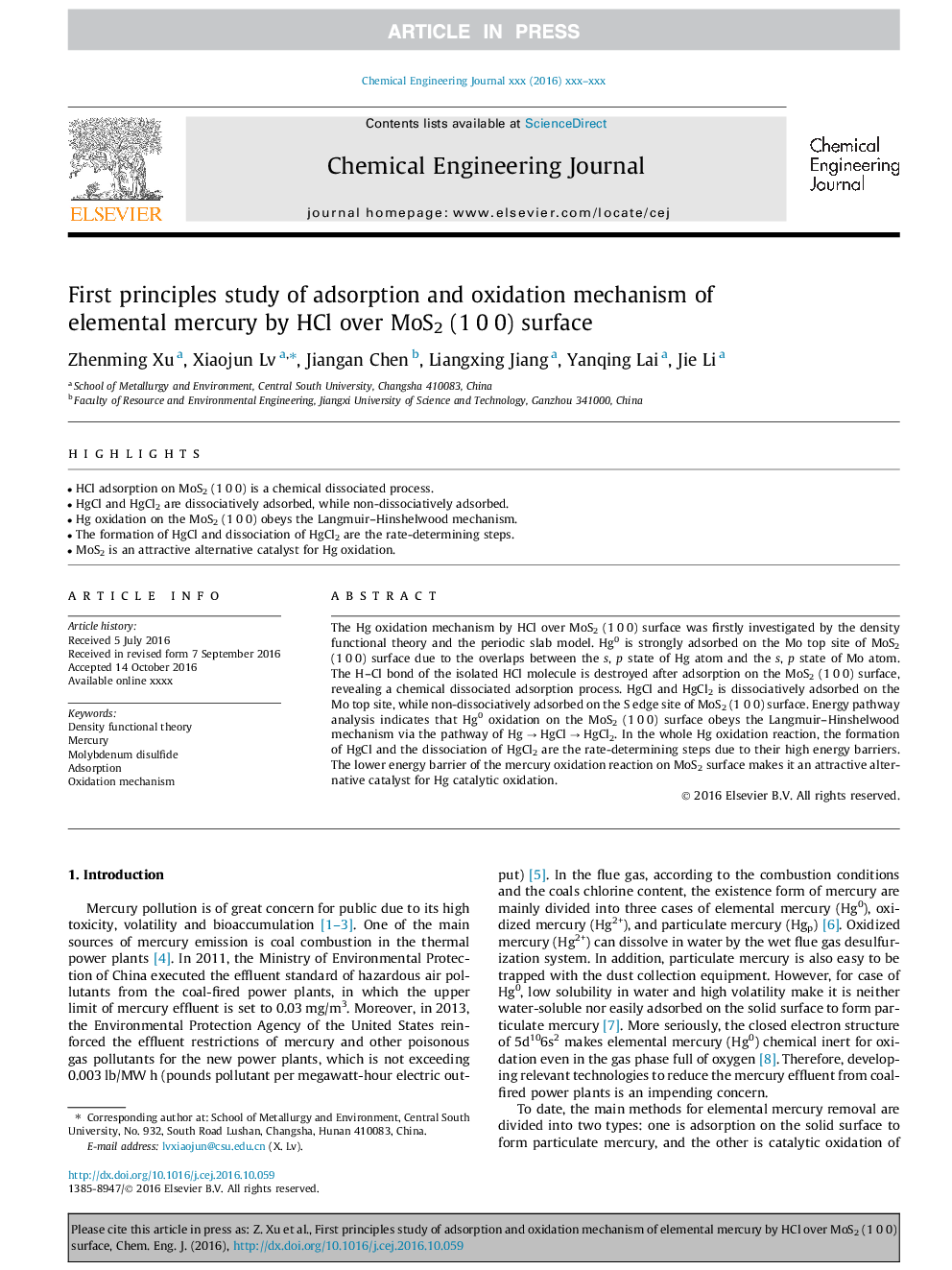| Article ID | Journal | Published Year | Pages | File Type |
|---|---|---|---|---|
| 4763749 | Chemical Engineering Journal | 2017 | 8 Pages |
Abstract
The Hg oxidation mechanism by HCl over MoS2 (1 0 0) surface was firstly investigated by the density functional theory and the periodic slab model. Hg0 is strongly adsorbed on the Mo top site of MoS2 (1 0 0) surface due to the overlaps between the s, p state of Hg atom and the s, p state of Mo atom. The H-Cl bond of the isolated HCl molecule is destroyed after adsorption on the MoS2 (1 0 0) surface, revealing a chemical dissociated adsorption process. HgCl and HgCl2 is dissociatively adsorbed on the Mo top site, while non-dissociatively adsorbed on the S edge site of MoS2 (1 0 0) surface. Energy pathway analysis indicates that Hg0 oxidation on the MoS2 (1 0 0) surface obeys the Langmuir-Hinshelwood mechanism via the pathway of Hg â HgCl â HgCl2. In the whole Hg oxidation reaction, the formation of HgCl and the dissociation of HgCl2 are the rate-determining steps due to their high energy barriers. The lower energy barrier of the mercury oxidation reaction on MoS2 surface makes it an attractive alternative catalyst for Hg catalytic oxidation.
Related Topics
Physical Sciences and Engineering
Chemical Engineering
Chemical Engineering (General)
Authors
Zhenming Xu, Xiaojun Lv, Jiangan Chen, Liangxing Jiang, Yanqing Lai, Jie Li,
